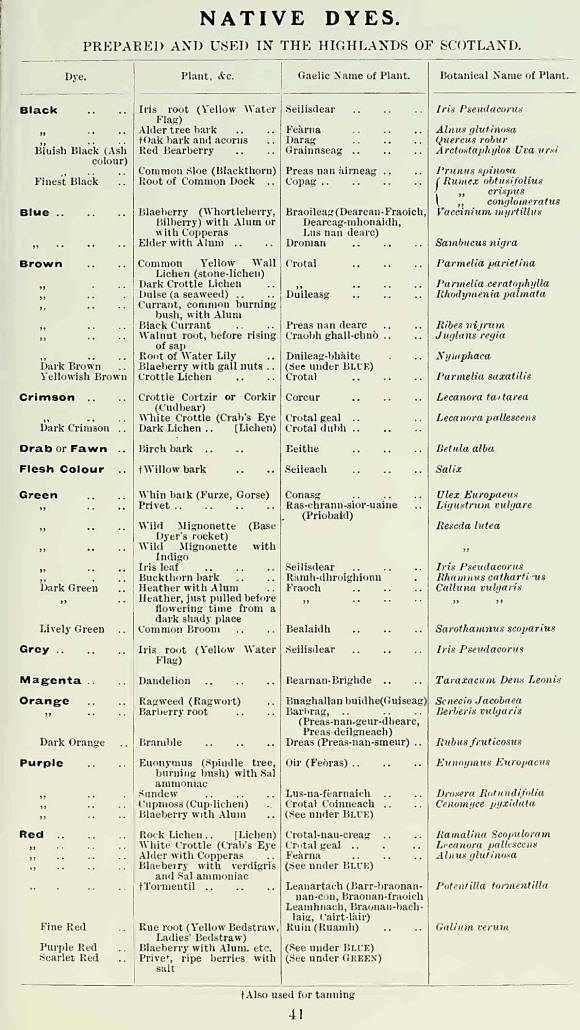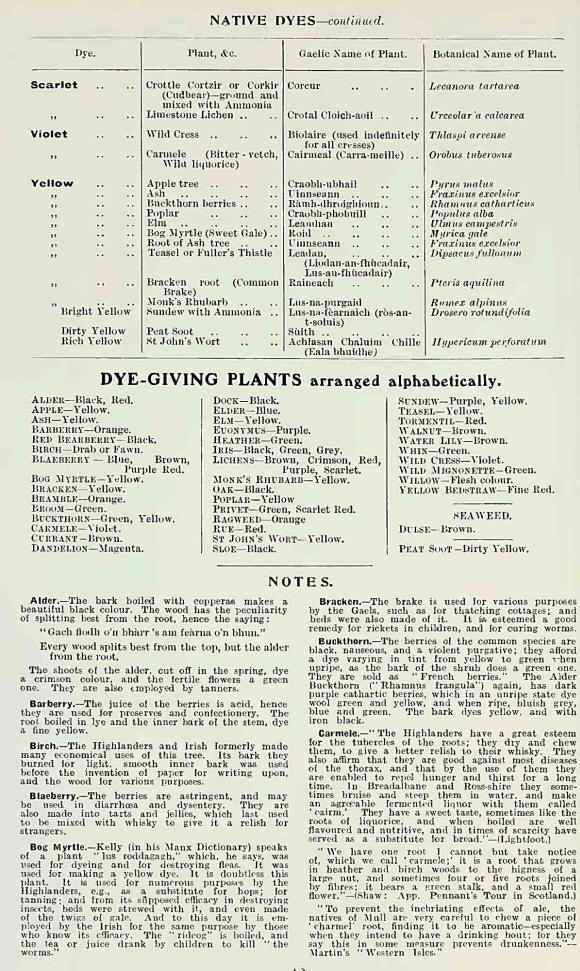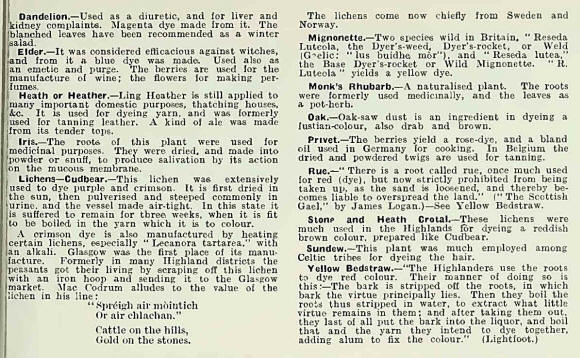|
This kind of information is quite hard to
find so was delighted to find this article in the Celtic Annual from
which I've extracted this article.
THE failure this year of the supply of
imported dyes has revived interest in the ancient dyeing and
dye-making industries of the Highlands, and it is matter of
astonishment to many persons to learn how well in former days our
fathers were supplied with the means of colouring the fabrics they
wore. It is true the natural dyes were incomparably less numerous
than those, numbering thousands, that are now extracted by the
chemist from coal tar. But they were numerous and varied enough to
satisfy a very exacting taste, and far more numerous than the
colours that any artist ever placed upon his palette. To find them
the Celts must have experimented with every plant that grows on
their native hills and in their valleys, and their quest extended to
every part of every plant thus examined for its properties. In the
accompanying list are given particulars of over eighty native
Highland dyes and their sources, and not improbably it could be
further extended. It will be noted as significant of the
appreciativeness of the Highland colour taste that every procurable
shade of the dominant colours was used and valued. Thus there were
in use no fewer than fourteen different yellows, ten reds, seven
purples, nine browns and as many greens, and of every colour there
is a certain range of choice. A glance over the list will show how
very little obviousness there was about most of the colour sources,
how much, therefore, their discovery must have been a matter of
deliberate research. Nothing, for example, will be more surprising
to one wholly unacquainted with the subject than the extent to which
the lichens are brought into use, plants which certainly do not, as
a rule, proclaim their possession of colouring properties, and which
in fact yield colours rarely suggested by their natural aspect. Thus
the common yellow wall lichen (Parmelia parietina) produces a brown,
Lecanora tartarea and Lecanora palleseeus each a crimson, the cup
lichen, Cenomyce pyxidata, a purple, and Bamalina scopuloram a red.
The weak point in the Highland colour production is in respect to
blues of which there were but two sources, the blae and elder
berries both requiring the addition of alum as a mordant. Doubtless
to this relative poverty is to be attributed the fact that even in
comparatively remote times, when the country supplied almost all its
own dyeing requisites, indigo was an appreciated import.
The question has been raised whether the present is not a favouiable
time for the revival of the native dye industry, but it is
questionable if the revival could be attempted with any prospects of
commercial success. To no little extent the old industry was the
attendant of tartan production then itself a home industry. The
people supplied the spun and dyed wool yams to the weavers along
with the most precise particulars of the setts or patterns to be
produced by them. To-day tartan is wholly produced under commercial
and industrial conditions, and though it would doubtless add to its
value in the estimation of all wearers to know that kilt and plaid
derived their colours from dyes extracted by Highland people from
Highland vegetation, it is questionable if place could be made for
them in the commercial system. For even the commercial makers of
tartan are dependent for their dyed yarns upon the commercial dyers.
But if all home-spuns could be guaranteed as dyed with native
vegetable dyes of home production it would undoubtedly add to the
attractiveness of the cloth, and there is no reason why, to that
extent at any rate, the native industry of dye-making should not be
revived.


 |

